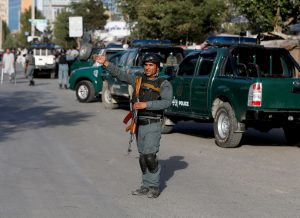
By Lucia Mutikani
WASHINGTON (Reuters) – U.S. homebuilding rebounded less than expected from a nine-month low in July, suggesting the housing market was likely to tread water for the rest of this year against the backdrop of rising construction costs and labor shortages.
But the fundamentals for the housing market remain strong. New filings for jobless benefits fell again last week, other data showed on Thursday, pointing to sustained labor market strength despite an escalating trade war between the United States and China that has rattled financial markets.
“It is more expensive to buy a new home for the American worker,” said Chris Rupkey, chief economist at MUFG in New York. “We cannot be confident that home construction will pick up in the near future.”
Housing starts rose 0.9 percent to a seasonally adjusted annual rate of 1.168 million units in July, the Commerce Department said. Starts fell to a nine-month low in June.
Groundbreaking activity increased in the Midwest and South, but dropped in the Northeast, and hit a more than 1-1/2-year low in the West. Last month’s increase in starts still left the bulk of June’s 12.9 percent plunge intact.
Building permits increased 1.5 percent to a rate of 1.311 million units, snapping three straight months of decreases. With permits now outpacing starts, homebuilding could pick up in the months ahead. But gains are likely to be limited as builders continue to complain about rising construction costs as well as shortages of skilled labor and land.
Lumber prices shot up after the Trump administration slapped anti-subsidy duties on imports of Canadian softwood lumber. Though prices have dropped in the past months, they remain high.
The housing market has underperformed a robust economy, with economists also blaming the slowdown on rising mortgage rates, which have combined with higher house prices to make home purchasing unaffordable for some first-time buyers.
The 30-year fixed mortgage rate has risen more than 50 basis points this year to an average of 4.53 percent, according to data from mortgage finance agency Freddie Mac. While that is still low by historical standards, the rise has outpaced annual wage growth, which has been stuck below 3 percent.
At the same time, house prices have increased more than 6.0 percent on an annual basis, largely driven by a dearth of properties available for sale. Residential investment contracted in the first half of the year and economists do not expect housing to contribute to growth in the final six months of 2018.
The economy grew at a 4.1 percent annualized rate in the second quarter, the fastest in nearly four years and almost double the 2.2 percent pace logged in the January-March period.
Economists polled by Reuters had forecast housing starts rising to a pace of 1.260 million units last month and permits increasing to a rate of 1.310 million units.
“Given the chronic lack of affordable housing and rapidly escalating home prices, it is worrisome that on a per capita basis, the country is producing new single-family housing stock at a rate that is similar to the trough of a typical recession,” said Sam Khater, chief economist at Freddie Mac.
The PHLX housing index <.HGX> was trading higher, tracking a broadly firmer U.S. stock market. The dollar slipped against a basket of currencies and U.S. Treasury prices fell.
TIGHT SUPPLY
Single-family home building, which accounts for the largest share of the housing market, rose 0.9 percent to a rate of 862,000 units in July. Single-family homebuilding has lost momentum since hitting a pace of 948,000 units last November, which was the strongest in more than 10 years.
Permits to build single-family homes jumped 1.9 percent in July to a pace of 869,000 units. Single-family building permits in the South, where more than half of homebuilding occurs, vaulted to an 11-year high in July.
Starts for the volatile multi-family housing segment gained 0.7 percent to a rate of 306,000 units in July. Permits for the construction of multi-family homes climbed 0.7 percent to a pace of 442,000 units.
With the moderate rise in homebuilding last month, housing inventory is likely to remain tight. In addition, housing completions fell for a third straight month, hitting an eight-month low rate of 1.188 million.
Realtors estimate that housing starts and completion rates need to be in a range of 1.5 million to 1.6 million units per month to plug the inventory gap. The stock of housing under construction was little changed at 1.122 million units.
In a separate report on Thursday, the Labor Department said initial claims for state unemployment benefits slipped 2,000 to a seasonally adjusted 212,000 for the week ended Aug. 11.
The claims data is being closely watched for signs of layoffs as a result of the Trump administration’s protectionist trade policy, which has also led to tit-for-tat import tariffs with other trading partners, including the European Union, Canada, and Mexico.
There have been reports of some companies either laying off workers or planning to as a result of the import duties. But with many companies reporting difficulties finding qualified workers, the fallout from the trade tensions might be minimal.
A third report showed factory activity in the mid-Atlantic region slowing sharply in August as new orders growth cooled. The Philadelphia Federal Reserve said its business conditions index tumbled 14 points to a 21-month low of 11.9 this month. Manufacturers were, however, optimistic about business prospects over the next six months.
(Reporting by Lucia Mutikani; Editing by Andrea Ricci)












